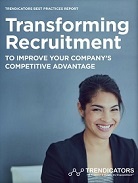
Recognition programs are significant, visible investments for any organization. It is critical that these programs launch successfully and achieve a prominent level of utilization quickly. Our work with many clients over many years offers valuable lessons about what can be done before and after a program launch to maximize its success.
1. Engaged and strong program leadership is critical at every step of a new program from strategy, design and implementation. Leadership’s sustained focus is critical to ensuring that the resulting program will meet the business needs and be a good fit for the organization’s culture.
2. Engaged program stakeholders throughout the organization help drive excitement about a new program and encourage the use of the new tools to recognize employees. Creating a network of local champions helps connect corporate-wide programs to the daily experiences of managers and employees.
3. Integrate the program into the daily life of the organization. Incorporate the recognition programs into the major events, activities, and celebrations. When recognition becomes part of the expressions of an organization’s culture, it can more easily become part of the culture.
4. Consider a phased launch. Instead of launching a large new program to an entire organization all at once, some organizations adopt a phased approach. The program is soft-launched to a group of employees for several months to pilot test it. The pilot test provides the organization with time to understand what is working and what needs to change, and it allows the organization to grow a base of committed users before the full program rollout to the entire organization.
5. Communicate frequently and provide opportunities for employees to engage with program leaders. Use multiple communication channels, from formal announcements on corporate websites, newsletters, and emails to “office hours” and small conversations with program leaders. Communicate often and in many ways to allow the message to reach all employees.
6. Make it easy for employees to participate. Many programs quickly lose steam because they are complicated, overengineered, and provide insufficient support on how to use them. Consider implementing a variety of learning tools that can help walk employees step-by-step through recognition tools. Providing support on using the tools and simplifying them will make recognition easy to give and receive.
7. Implement strategies to encourage initial engagement with the program tools. One of the most difficult challenges with a new program is adoption. Consider using points and other incentives to get employees to try the new programs. If the programs are well-designed and easy to use, employees will quickly see their value and return to using them.
8. Provide re-occurring opportunities to learn more about recognition. Recognition goes well beyond platforms and programs. Provide employees with learning opportunities on how to provide meaningful and motivating recognition. It is not the points that matter; the appreciation and acknowledgment of an employee’s contributions to the organization counts. It will only count when it is done well.
9. Measurement, reporting, and analytics must be part of the program design from the beginning. Insight into how the program is working to meet the business needs is foundational to a long-term commitment to recognition by leaders and employees. When designing a program, be clear on the metrics of success and ensure that the program can deliver those metrics.
Organizations that utilize all or some combination of these lessons can achieve early and active engagement with the program. One large client who applied these lessons had 75% of employees access the new program within three months of launch, and close to 60% of all managers provided recognition using the program. The prominent level of early adoption of these programs translated into a high level of employee recognition. During the program’s first eight months, over 50% of their global workforce received at least one form of recognition.
Learn how some of our other clients are applying these lessons to see success and make recognition memorable.
 Charles Scherbaum, Ph.D. is a nationally recognized expert in analytics, talent management, assessment, performance management, and employee and customer research. Charles has worked with and overseen many research and analytics initiatives for Fortune 500 companies and is the winner of the Society for Industrial and Organizational Psychology’s M. Scott Myers Award and the Innovations in Assessment Award from the International Personnel Assessment Council.
Charles Scherbaum, Ph.D. is a nationally recognized expert in analytics, talent management, assessment, performance management, and employee and customer research. Charles has worked with and overseen many research and analytics initiatives for Fortune 500 companies and is the winner of the Society for Industrial and Organizational Psychology’s M. Scott Myers Award and the Innovations in Assessment Award from the International Personnel Assessment Council.
Connect with him on LinkedIn.


